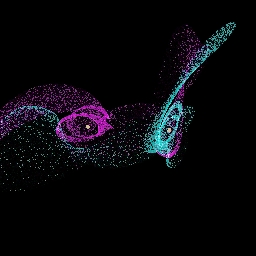| Kuiper Belt: Formation | ||
|
The Kuiper Belt remained a theory until 1992, when Jane Luu and Dave Jewitt discovered the first Kuiper Belt object, 1992 QB1. Over the next decade, Luu and Jewitt and other teams of astronomers discovered several distinct groups of KBOs. The Plutinos have elongated orbits similar to Pluto. They make 2 orbits around the Sun for every 3 orbits of Neptune. Some other KBOs make 2 orbits of the Sun for every orbit of Neptune. All of these KBOs are in orbital resonance with Neptune. The classical KBOs have nearly circular orbits slightly farther away from the Sun than the Plutinos. Finally, the scattered KBOs have very elongated orbits that take them well outside the orbit of Neptune. The orbital periods of KBOs range from 200--400 years for the Plutinos and most classical KBOs to 1000 years or longer for the scattered KBOs.
The Kuiper belt poses a serious challenge for theories of planet formation.
The belt contains less than 1% of the mass expected from the protosolar
nebula theory. Yet, if we think Kuiper belt objects formed like the
terrestrial planets, growing by
accumulating smaller objects at they orbit the Sun, it would take longer
than the age of the solar system to make one KBO!
| ||




